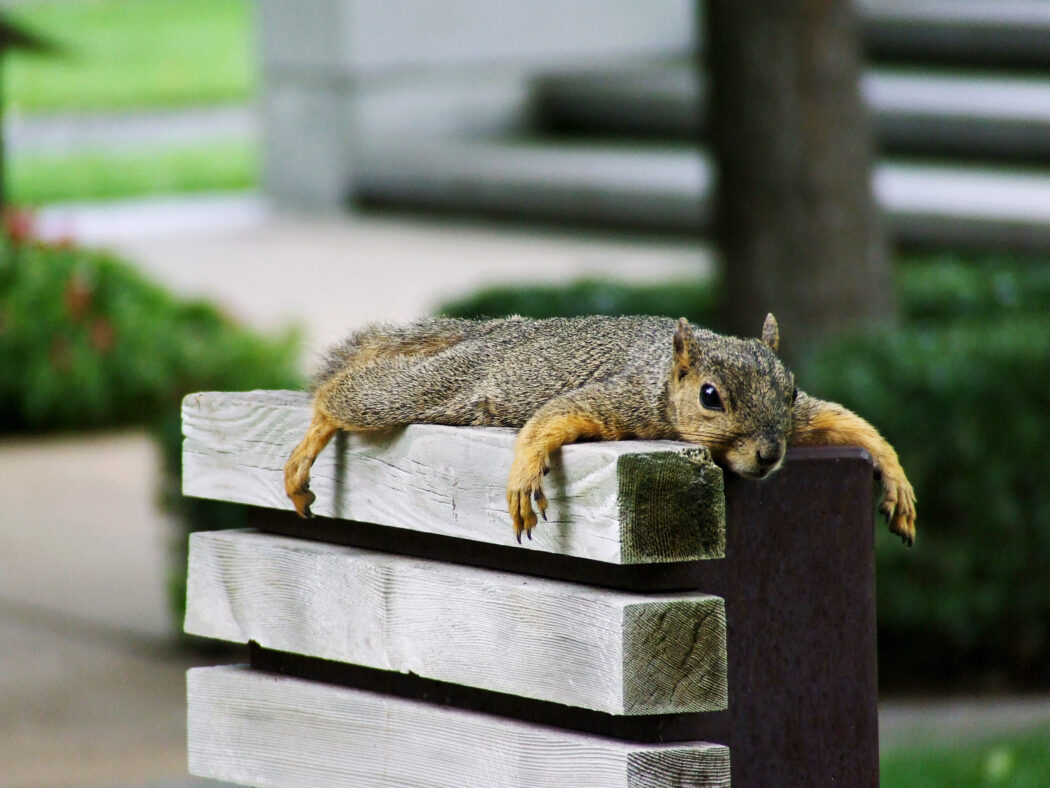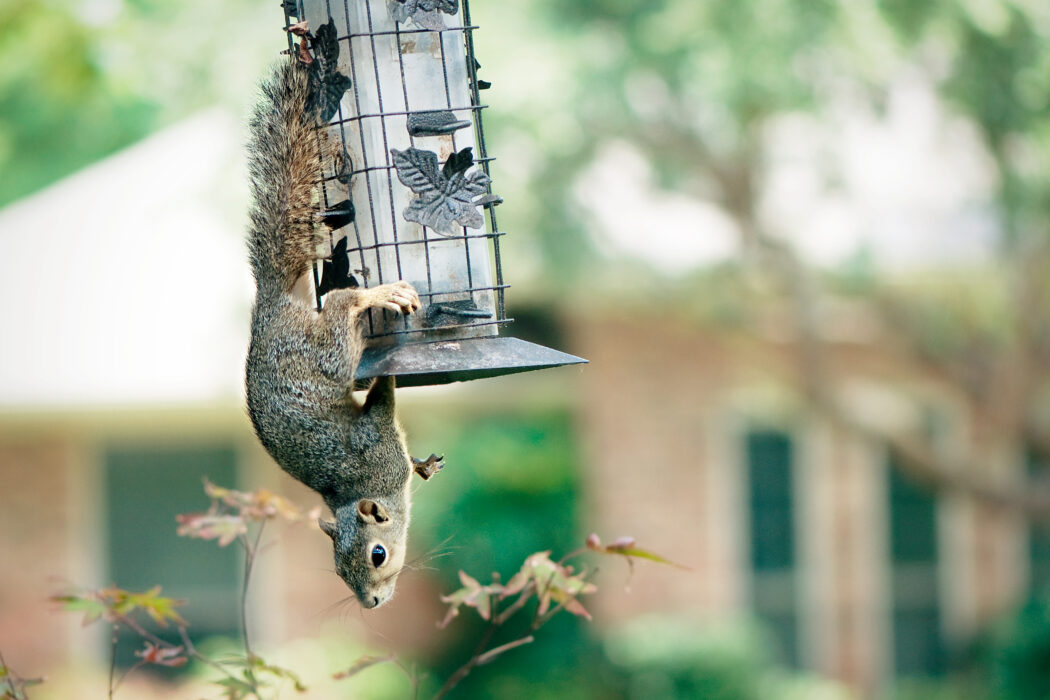
Photography courtesy of DeWaun Simmons.
“Squirrels R Evil. Change my mind.”
That was the message Lakewood neighbor Linda Marie Ford recently displayed in her window, then posted on social media. In the photo of the window, she stands nearby, her arm in a sling.
So many questions. Let’s start with: Why the anti-squirrel campaign, Linda?
“My husband and I were dog sitting for our son and his wife,” Ford says.
While working in her home office, she noticed Winnie the granddog going back and forth at the window.
“The squirrels were taunting her.”
So off they go for a walk, chasing four squirrels in the process.
“But I didn’t see the fifth one. Winnie made a break for it. I flew over the neighbors’ lawn chairs and crashed to the ground like an NFL player.”
“My only wish,” she says wryly, “was that one of our neighbors caught me sailing over their Adirondacks on their Ring doorbell, but alas, no footage exists.”
Ford’s famous sense of humor is intact, even if her humerus is not.
Judging from the Facebook comments she received, many in East Dallas have issues with these ubiquitous little creatures whom one commenter deemed “just rats with fuzzy tails.” Another commenter suggested Ford deal with the offender by taking it for a one-way ride to the taxidermist.
It’s a conundrum.
Squirrels are entertaining to watch, but they can wreak havoc, be it a destroyed flower bed or a broken arm. Brett Johnson, an urban biologist for Dallas Park and Recreation, can help us get inside the heads of these inscrutable animals.
Johnson says the little guys running wild in our neighborhood are fox squirrels. They are native to this area, slightly larger than other tree squirrels and, surprisingly, spend more time on the ground than most tree squirrels.
And there is some truth to the wisecrack about “rats with fuzzy tails.” Squirrels are members of the rodentia family of mammals.
Like all animals, they play an important role in the ecosystem.
“They’re important for seed dispersal and may help influence forest succession, which is the changing of plant species over time,” Johnson says. “They bury a lot of seeds and acorns and forget about a lot of them. This can help kick-start getting new trees in the ground.”
You’ve likely seen them in your yard or at the park, frantically digging. That’s because they frequently find and rebury their stashes, Johnson says. However, they also create fake stashes to safeguard their acorns from thieves.

Photography courtesy of DeWaun Simmons.
They might be chuckling to themselves as they set up a pile of debris with no nuts or acorns underneath, but it’s a ploy that is rarely successful.
No doubt you’ve heard their chatter, maybe even been on the receiving end of it. It’s not your imagination: You are indeed being cussed out by a squirrel.
“These squirrels have been taunting me for decades,” Johnson says. “They are the early warning system of the woods, and very vocal.”
Most of their vocalizations are with each other, but they will most certainly give you, a perceived predator, an earful. They usually chatter from high in a tree or on a rooftop.
“If they are where they think they are safe, they will chew out a person or dog,” Johnson says.
And they’re likely to punctuate their comments with an annoyed or angry twitch of the tail.
Speaking of annoyed, what are we to do about their stashes in our gardens and flowerbeds? How to stop the digging?
Johnson offers a couple of tips.
“Keep their favorite foods — acorns, nuts, berries — out of the garden. You can try the assorted predator scents, but keep in mind, once they get used to the scent, they don’t care,” he says.
He also suggests trying a motion-activated water sprinkler.
And birdfeeders? It seems squirrels dine there often, crowding out the intended customers. Johnson recommends the 5-7-9 rule.
“They can’t jump up more than about five feet, they can’t launch more than about seven feet and don’t like to drop more than nine feet,” he says. “So keep that in mind when placing the feeder.”
Caged feeders or feeders with perches that squirrels are too heavy for are other options.
“You can also look at one of the caged feeders,” he says. “There are also feeders with perches that squirrels are too heavy for. They will either tip or in some cases trigger the perch to spin.”
As far as feeding squirrels, Johnson advises against it.
“They get used to being around humans, and then they may go looking for a handout,” Johnson says.
Someone — probably not the squirrel — could get bitten.
He also says March is baby squirrel season, which means an uptick in calls to the DFW Wildlife Coalition hotline about injured and orphaned squirrels. Longtime hotline volunteer and rehabber Julie Cassidy says baby squirrels are identified by their unique black nails. If the baby has no apparent injuries, all efforts should be made to reunite it with its mother, who is likely nearby, foraging for food.
Cassidy strongly encourages neighbors to avoid using rodenticides to control the rat and squirrel populations. Squirrels are part of the food chain for coyotes, bobcats and raptors such as hawks and eagles.
“I wonder how our neighborhood would feel If one of the eagles at the lake ate a poisonous rodent and died,” she says.
Johnson offers this perspective.
“We probably have more squirrels now than in the past. Keep in mind most of the Dallas area was prairie. The only places we had squirrel habitat was down along the creeks,” he says. “As we built up the city, we planted trees everywhere, especially oak trees. Fox squirrels are a species that has adapted quite nicely to living in urban settings.”





